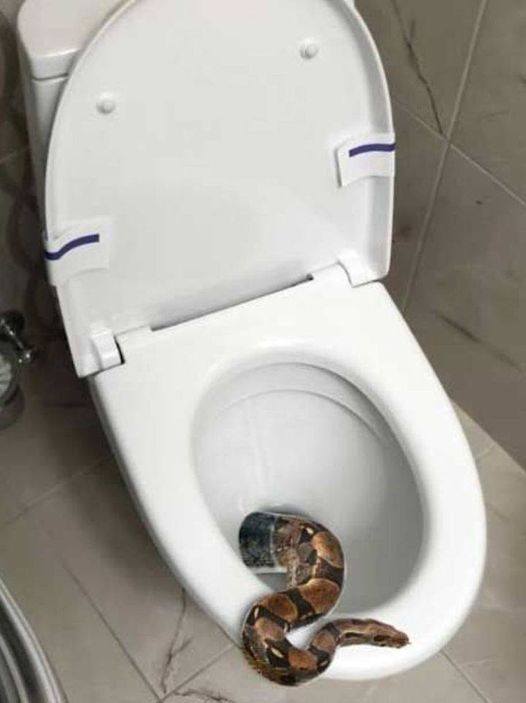ADVERTISEMENT
### **4. Waterbugs (Cockroach Varieties)**
Waterbugs, often referred to as “water cockroaches” or “Palmetto bugs,” are large cockroaches that tend to live in damp, humid environments like bathrooms. These critters are often found near toilets, sinks, and drains because of the easy access to water.
#### **Why They Crawl Through Toilets**
Waterbugs are attracted to moist environments, and they may enter the home through cracks in the foundation, plumbing, or toilets. If they gain access to your bathroom, they will use the toilet as a means to move between areas of your home, particularly in the search for food and water.
#### **Risks Posed by Waterbugs**
– **Disease Transmission**: Like other cockroaches, waterbugs are carriers of disease. They can spread harmful bacteria, such as E. coli and salmonella, by contaminating surfaces with their feces, saliva, or body parts.
– **Nuisance**: The presence of large, fast-moving waterbugs in your bathroom can be frightening and unpleasant. Their size and tendency to scatter can make them difficult to manage.
#### **How to Fight Waterbugs**
– **Improve Drainage and Seal Gaps**: Fix any leaks around the toilet and sink, and check for cracks around the plumbing where waterbugs might be entering.
– **Use Cockroach Traps and Baits**: Set traps around the bathroom to capture waterbugs and reduce their numbers. Cockroach baits are also effective at eliminating them by poisoning the bugs.
– **Maintain a Clean Bathroom**: Like other cockroaches, waterbugs are attracted to food and moisture. Clean your bathroom regularly and dry any wet areas after use to make it less appealing to waterbugs.
—
### **5. Spiders**
Spiders may not crawl directly through your toilet, but it is possible for them to enter your bathroom through pipes, gaps, or vents. If they are seeking food or shelter, the moist environment of the bathroom can attract them, and once inside, they may make themselves at home in the corners of your bathroom or even inside the toilet bowl.
#### **Why They Crawl Through Toilets**
Spiders are often looking for food sources like insects and water, which is why bathrooms can attract them. While they typically enter your home through cracks in walls or windows, they may also use plumbing to find their way into the bathroom.
#### **Risks Posed by Spiders**
– **Bites**: While most spiders are harmless, some species—like the black widow or brown recluse—can deliver dangerous bites. In some cases, a bite can lead to severe medical complications.
– **Nuisance**: Many people find the sight of spiders in their bathroom unsettling, especially if they appear in the toilet or shower.
#### **How to Fight Spiders**
– **Seal Cracks and Gaps**: Inspect the plumbing and walls for cracks where spiders might be entering. Use sealants to close off any entry points.
– **Remove Webs and Egg Sacs**: Regularly remove spider webs from corners, pipes, and behind fixtures in the bathroom. This will discourage spiders from building nests.
– **Insecticides**: If you have a significant spider problem, use insecticides or natural repellents like peppermint oil to deter them from entering your bathroom.
—
### **Conclusion**
While the idea of critters crawling through your toilet is certainly unsettling, it’s important to remember that most of these
pests can be controlled and prevented with the right measures. From cockroaches to rats, understanding how these pests enter your bathroom and knowing how to fight them is crucial to maintaining a clean and healthy environment. Regular cleaning, sealing cracks, and using the right traps and repellents will help ensure that your bathroom remains pest-free. So, take action today, and say goodbye to those unwanted critters that might be lurking in your toilet.
